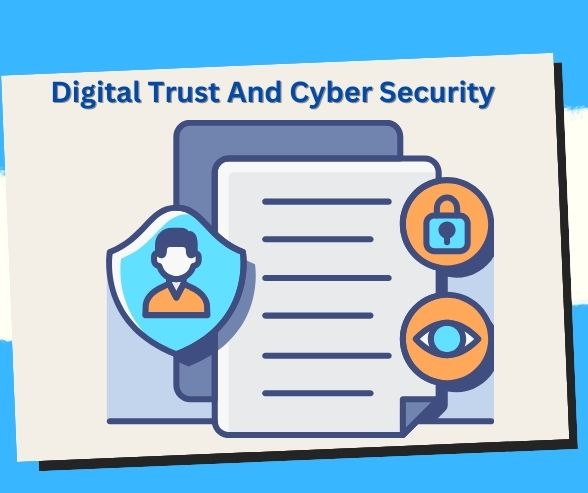
Understanding DORA: How It Impacts the Financial Services Industry
DORA is a game-changer for financial services. Explore how this regulation impacts your operations and compliance requirements.
Navigating DORA Compliance: Guide for Financial Institutions in 2024 📊🔒
In an increasingly interconnected and digital world, the stability and resilience of the financial sector have never been more critical. As such, the Digital Operational Resilience Act (DORA) was introduced by the European Union to ensure that financial institutions can withstand and respond effectively to operational disruptions. Whether it’s cyberattacks, system failures, or unforeseen natural disasters, DORA aims to fortify the financial sector’s resilience and protect consumers.
As financial institutions strive for DORA compliance, understanding its requirements and implications is crucial. This guide will break down the key components of DORA, provide actionable steps for compliance, and offer practical tips to ensure your institution is prepared for the future. Let’s dive into the world of DORA compliance! 🌐💪
What is DORA? Understanding the Digital Operational Resilience Act 📜
DORA is a legislative framework introduced by the European Commission aimed at enhancing the operational resilience of financial services. Enacted as part of the EU’s broader financial services reform, DORA outlines requirements for institutions to manage risks associated with information and communication technologies (ICT). The act applies to various financial entities, including banks, insurance companies, investment firms, and critical third-party providers.
Key Objectives of DORA:
- Enhance Operational Resilience: Ensure that financial institutions can resist, recover from, and adapt to various operational disruptions.
- Standardize ICT Risk Management: Establish uniform standards for managing ICT risks across the financial sector.
- Increase Transparency and Accountability: Improve the visibility of ICT-related risks and enhance accountability within financial institutions.
- Facilitate Information Sharing: Encourage collaboration and information sharing between institutions regarding cyber threats and vulnerabilities.
Key Components of DORA Compliance 📋🔍
To comply with DORA, financial institutions must adhere to several key components. Understanding these requirements is essential for developing a robust compliance strategy.
1. Governance and Risk Management Framework 🏛️
Institutions must establish a strong governance framework that outlines roles, responsibilities, and accountability regarding ICT risk management. This includes:
- Board Oversight: Ensure that the board of directors is actively involved in overseeing the institution’s ICT risk management strategies.
- Risk Assessment: Conduct regular assessments to identify potential ICT risks and vulnerabilities, considering both internal and external threats.
- Policies and Procedures: Develop comprehensive policies and procedures for managing ICT risks and ensure they are communicated across the organization.
2. Incident Reporting and Response 🚨🛡️
DORA mandates that financial institutions have robust incident response plans in place. This includes:
- Incident Detection: Implement systems to detect ICT-related incidents promptly.
- Incident Reporting: Establish clear procedures for reporting incidents to regulatory authorities and relevant stakeholders.
- Post-Incident Review: Conduct thorough reviews after incidents to identify lessons learned and improve future responses.
3. Testing and Resilience Testing 🧪
Regular testing of ICT systems and processes is crucial to ensure operational resilience. Institutions must:
- Conduct Stress Tests: Regularly perform stress tests and simulations to evaluate the effectiveness of incident response plans.
- Third-Party Testing: Ensure that critical third-party service providers also undergo resilience testing to assess their capability to withstand disruptions.
4. Monitoring and Continuous Improvement 🔍🔄
Institutions must implement continuous monitoring of their ICT systems and processes to identify potential risks proactively. This involves:
- Real-Time Monitoring: Utilize monitoring tools to continuously track the performance and security of ICT systems.
- Feedback Mechanisms: Establish feedback loops to gather insights from employees and stakeholders regarding potential vulnerabilities and improvement opportunities.
Steps to Achieve DORA Compliance 📈🛠️
Achieving DORA compliance can seem daunting, but breaking it down into manageable steps can simplify the process. Here’s a step-by-step guide to help financial institutions navigate compliance successfully.
Step 1: Conduct a Gap Analysis 🔎
Begin by assessing your current ICT risk management framework against DORA’s requirements. This involves:
- Identifying Existing Policies: Review existing policies and procedures to identify gaps in compliance with DORA.
- Assessing Risk Management Practices: Evaluate the effectiveness of current risk management practices in identifying and mitigating ICT risks.
Step 2: Develop a Compliance Roadmap 🗺️
Once you’ve identified gaps, create a comprehensive compliance roadmap that outlines the steps needed to achieve DORA compliance. This should include:
- Action Items: List specific actions needed to address gaps in policies, procedures, and practices.
- Timeline: Establish a timeline for implementing these actions, with milestones for tracking progress.
- Resource Allocation: Determine the resources required, including personnel, budget, and technology, to support compliance efforts.
Step 3: Enhance Governance Structures 🏛️
Strengthen your organization’s governance structure by:
- Establishing a Compliance Committee: Form a committee responsible for overseeing DORA compliance efforts, including representation from various departments.
- Training for Board Members: Provide training for board members to ensure they understand their roles and responsibilities regarding ICT risk management.
Step 4: Implement Incident Response Plans 📋
Develop and refine your incident response plans by:
- Drafting Comprehensive Procedures: Create clear procedures for detecting, reporting, and responding to ICT-related incidents.
- Conducting Training Exercises: Regularly conduct training exercises to ensure employees are familiar with incident response protocols.
Step 5: Regular Testing and Monitoring 📊
Establish a routine for testing and monitoring your ICT systems, including:
- Schedule Stress Tests: Implement a schedule for conducting stress tests and simulations to evaluate your incident response capabilities.
- Continuous Monitoring: Invest in real-time monitoring tools to track the performance and security of your ICT systems.
Step 6: Engage with Third-Party Providers 🔗
Collaborate with third-party service providers to ensure they meet DORA compliance requirements. This includes:
- Conducting Due Diligence: Assess the cybersecurity practices of critical third-party providers before entering into contracts.
- Incorporating Compliance Clauses: Include DORA compliance clauses in contracts with third-party providers, ensuring they understand their responsibilities regarding ICT risk management.
Practical Tips for DORA Compliance Success 🌟📝
Achieving DORA compliance requires dedication and continuous effort. Here are some practical tips to ensure your institution remains compliant and resilient:
1. Foster a Culture of Cyber Awareness 💻👥
Promote a culture of cybersecurity awareness throughout your organization. This can include:
- Regular Training Sessions: Offer training sessions on cybersecurity best practices, incident reporting, and risk management.
- Encouraging Open Communication: Create channels for employees to report potential security threats without fear of repercussions.
2. Leverage Technology for Monitoring and Reporting ⚙️🔍
Utilize advanced technology solutions to enhance your monitoring and reporting capabilities:
- Automated Monitoring Tools: Invest in tools that provide real-time monitoring and alerts for potential incidents.
- Data Analytics: Use data analytics to identify patterns and trends in ICT risks, enabling proactive risk management.
3. Collaborate with Industry Peers 🤝🌍
Engage with other financial institutions and industry organizations to share insights and best practices for DORA compliance:
- Participate in Industry Events: Attend conferences and workshops focused on cybersecurity and regulatory compliance.
- Join Industry Groups: Join organizations like the European Banking Authority (EBA) to stay informed about best practices and regulatory updates.
4. Stay Informed About Regulatory Changes 📅📣
DORA compliance requires ongoing awareness of regulatory changes. Stay informed by:
- Subscribing to Regulatory Updates: Sign up for newsletters and updates from regulatory authorities to receive timely information.
- Engaging with Legal Experts: Consult with legal and compliance experts to ensure your institution remains up-to-date with evolving regulations.
🌐 Benefits of DORA Compliance
- Enhanced Cyber Resilience 🛡️
DORA compliance helps organizations establish robust measures to protect against cyber threats. By following its guidelines, financial institutions can improve their resilience to cyberattacks, reducing the risk of data breaches and system failures. - Strengthened Operational Continuity 🔄
DORA mandates that institutions develop and implement business continuity plans. This ensures that organizations can continue their critical operations even in the face of disruptions, thereby minimizing downtime. - Improved Risk Management 📊
DORA requires organizations to perform thorough risk assessments regularly. This proactive approach helps identify vulnerabilities and implement mitigation strategies, leading to a more secure operational environment. - Increased Trust and Confidence 🤝
By adhering to DORA, financial institutions demonstrate their commitment to safeguarding customer data. This enhances customer trust and confidence in the organization, which is crucial for long-term success. - Regulatory Compliance ⚖️
Compliance with DORA ensures that organizations meet the regulatory requirements set by the EU, reducing the risk of penalties and fines. This regulatory framework provides a clear roadmap for achieving compliance. - Holistic Approach to Digital Resilience 🌍
DORA encourages a comprehensive approach to operational resilience, incorporating technology, people, and processes. This holistic perspective enables organizations to address potential threats from multiple angles. - Collaboration and Information Sharing 🤝
DORA promotes cooperation among financial institutions and regulatory authorities. This collaborative spirit fosters information sharing about cyber threats and best practices, improving overall industry resilience. - Better Incident Response 🚀
DORA compliance includes the establishment of incident response frameworks. This ensures that organizations can respond promptly and effectively to incidents, reducing the impact of cyber threats. - Enhanced Customer Experience 🌟
By ensuring operational continuity and data protection, DORA compliance contributes to a seamless customer experience. Customers are more likely to engage with organizations they trust to protect their information. - Long-Term Sustainability ♻️
Organizations that prioritize DORA compliance position themselves for long-term success. By investing in resilience, they can adapt to changing market conditions and customer expectations, ensuring sustainability in the digital age.
📝 Case Studies of DORA Compliance in Action
1. European Investment Bank (EIB)
The EIB implemented DORA compliance measures by developing comprehensive risk assessment frameworks and business continuity plans. As a result, the bank improved its resilience against cyber threats and ensured uninterrupted operations.
2. Deutsche Bank
Deutsche Bank adopted DORA principles by enhancing its incident response capabilities and conducting regular training for staff. This proactive approach allowed the bank to minimize the impact of potential cyber incidents significantly.
3. Barclays
Barclays embraced DORA compliance by investing in advanced cybersecurity technologies. The bank’s commitment to protecting customer data led to increased trust and a stronger reputation in the financial services industry.
4. BNP Paribas
BNP Paribas implemented a comprehensive cybersecurity strategy aligned with DORA, which included continuous monitoring of systems and regular audits. This approach strengthened the bank’s operational resilience and compliance posture.
5. HSBC
HSBC developed a robust incident management framework as part of its DORA compliance efforts. This enabled the bank to respond effectively to cyber threats and maintain operational continuity during disruptions.
6. Santander
Santander took a proactive approach to DORA compliance by establishing clear communication channels for sharing information about cyber threats. This collaboration improved the bank’s ability to respond to emerging risks.
7. ING Group
ING Group invested in staff training programs focused on DORA compliance. By equipping employees with the knowledge to identify and respond to cyber threats, the bank enhanced its overall cybersecurity posture.
8. Commerzbank
Commerzbank leveraged DORA to streamline its risk management processes. By conducting regular risk assessments and implementing mitigation strategies, the bank strengthened its operational resilience against cyber threats.
9. Nordea Bank
Nordea Bank established a dedicated team to oversee DORA compliance efforts, ensuring that all employees understood the importance of operational resilience. This commitment fostered a culture of security within the organization.
10. UniCredit
UniCredit embraced DORA by enhancing its digital infrastructure and adopting a holistic approach to operational resilience. This comprehensive strategy allowed the bank to adapt to evolving regulatory requirements and industry standards.
🧩 Key Takeaways on DORA Compliance
- Prioritize Cyber Resilience
Financial institutions must prioritize cyber resilience as a core component of their operational strategy to comply with DORA. - Invest in Continuous Training
Regular training and awareness programs for employees are essential for fostering a culture of security and ensuring compliance. - Establish Incident Response Plans
Developing robust incident response frameworks is crucial for minimizing the impact of cyber incidents and ensuring quick recovery. - Conduct Regular Risk Assessments
Organizations should perform comprehensive risk assessments regularly to identify vulnerabilities and implement effective mitigation strategies. - Implement Business Continuity Plans
DORA mandates the creation of business continuity plans to ensure critical operations can continue during disruptions. - Promote Collaboration
Institutions should foster collaboration with regulatory authorities and other organizations to share information and best practices related to cybersecurity. - Leverage Technology
Investing in advanced cybersecurity technologies is essential for meeting DORA requirements and protecting sensitive data. - Ensure Regulatory Compliance
Staying informed about evolving regulations and ensuring compliance is crucial for avoiding penalties and maintaining trust. - Adopt a Holistic Approach
Organizations should take a comprehensive view of operational resilience, incorporating technology, people, and processes into their strategies. - Monitor and Adapt
Continuous monitoring of systems and adapting to changing threats is vital for maintaining compliance and resilience.
❓ FAQs About DORA Compliance
1. What is DORA compliance?
DORA compliance refers to adherence to the Digital Operational Resilience Act, a regulation by the European Union aimed at strengthening the resilience of financial institutions against cyber threats and operational risks.
2. Why is DORA important for financial institutions?
DORA is crucial for financial institutions as it establishes a framework for ensuring operational resilience, protecting customer data, and maintaining trust in the financial system.
3. What are the key requirements of DORA?
Key requirements of DORA include implementing risk management frameworks, developing incident response plans, conducting regular risk assessments, and ensuring business continuity.
4. How does DORA impact customer trust?
By ensuring compliance with DORA, financial institutions demonstrate their commitment to protecting customer data, thereby enhancing trust and confidence in their services.
5. What happens if an organization fails to comply with DORA?
Failure to comply with DORA can result in regulatory penalties, reputational damage, and increased vulnerability to cyber threats.
6. How can organizations prepare for DORA compliance?
Organizations can prepare by conducting gap analyses, developing risk management strategies, investing in training, and establishing incident response frameworks.
7. Is DORA applicable to all financial institutions?
Yes, DORA applies to all financial institutions operating within the European Union, including banks, insurance companies, and investment firms.
8. What role does technology play in DORA compliance?
Technology plays a vital role in DORA compliance by enabling organizations to implement advanced cybersecurity measures, monitor systems, and respond effectively to incidents.
9. How often should organizations conduct risk assessments?
Organizations should conduct risk assessments regularly, ideally at least annually, or whenever there are significant changes in their operations or the threat landscape.
10. What resources are available for understanding DORA compliance?
Organizations can access resources from regulatory authorities, industry associations, and cybersecurity organizations to stay informed about DORA requirements and best practices.
Conclusion: Embracing DORA Compliance for a Resilient Future 🌟🔒
As the financial sector continues to evolve, embracing DORA compliance is essential for ensuring operational resilience and protecting consumer interests. By understanding the key components of DORA, implementing a structured approach to compliance, and fostering a culture of cybersecurity awareness, financial institutions can strengthen their resilience against operational disruptions.
In 2024, proactive compliance will not only safeguard institutions against regulatory penalties but also enhance their reputation and build trust with customers. By taking the necessary steps today, your organization can thrive in the face of challenges and contribute to a more resilient financial ecosystem.
Are you ready to embark on your DORA compliance journey? Start implementing these strategies today to ensure your institution is well-equipped for the future! 💪🌐
Key Phrases
- DORA compliance requirements
- Digital Operational Resilience Act
- Financial institutions and DORA
- Strengthening operational resilience
- DORA implementation strategies
- Preparing for DORA compliance
- Impact of DORA on finance
- DORA compliance best practices
- Navigating DORA regulations
- Ensuring compliance with DORA
Best Hashtags
- #DORACompliance
- #DigitalResilience
- #OperationalResilience
- #FinancialRegulations
- #DORA2024
- #ComplianceStrategy
- #ResilientFinance
- #FinancialInstitutions
- #DORAGuide
- #RegulatoryCompliance
Save/Share this story with QR CODE
Disclaimer
This article is for informational purposes only and does not constitute endorsement of any specific technologies or methodologies and financial advice or endorsement of any specific products or services.
📩 Need to get in touch?
📩 Feel free to Contact NextGenDay.com for comments, suggestions, reviews, or anything else.
We appreciate your reading. 😊Simple Ways To Say Thanks & Support Us:
1.) ❤️GIVE A TIP. Send a small donation thru Paypal😊❤️
Your DONATION will be used to fund and maintain NEXTGENDAY.com
Subscribers in the Philippines can make donations to mobile number 0917 906 3081, thru GCash.
3.) 🛒 BUY or SIGN UP to our AFFILIATE PARTNERS.
4.) 👍 Give this news article a THUMBS UP, and Leave a Comment (at Least Five Words).
AFFILIATE PARTNERS

World Class Nutritional Supplements - Buy Highest Quality Products, Purest Most Healthy Ingredients, Direct to your Door! Up to 90% OFF.
Join LiveGood Today - A company created to satisfy the world's most demanding leaders and entrepreneurs, with the best compensation plan today.



 Business Technology, Finance Technology & Information Technology
Business Technology, Finance Technology & Information Technology





